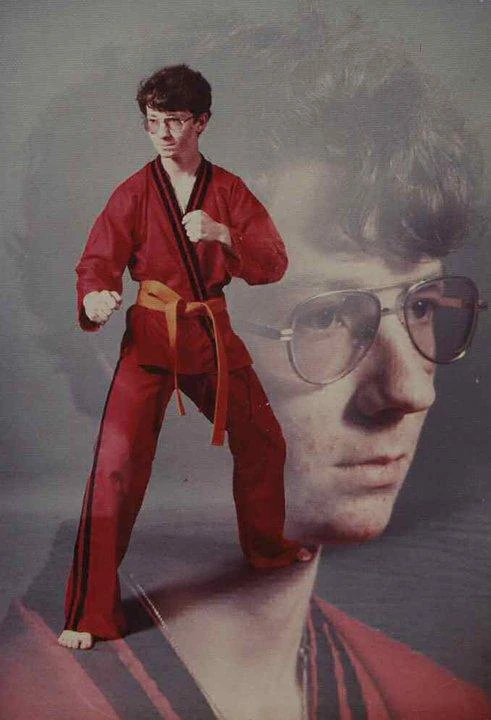- Joined
- Dec 19, 2012
- Messages
- 3,903
- Reaction score
- 7,414
Over the years I've gone down the rabbit hole of exploring different ways to score fights to see if there is a better way.
I've tried using different models that have been proposed before: half-point system, wider scoring system (i.e. 0-5 points per round) to see if they combat the issues with the current UFC model i.e. Non-cumulative scoring (round-system), 10-9 system (limited point values), highly confusing scoring language.
Though these scoring models do offer improvements in having a better conceptual perspective on who won a fight, they ultimately succeed and fail based on the merits of the judges. Unfortunately, in a sport as corrupt and incompetent as MMA, the judges are mostly absolute terrible so it doesn't matter what scoring system you give them - they will figure out a way to fuck it up!
That made me realize that the scoring from the judges end will always have problems, no matter the updated solution. However, what changing the scoring can do is give the fighters a more clear-cut conceptual understanding of what they are trying to accomplish and whether or not they are actually winning.
The solution is actually pretty simple and has been proposed before by many:
A) Score fights in their entirety
B) The only thing that scores is damage
A - We need to score fights in their entirety, the round system is built to be exploited by point-fighters/control-fighters. In every other sport offensive is cumulative i.e. Baseball/Football/Soccer/Basketball/Hockey/Tennis you add up the score in all the quarters/periods/innings to get a sum total of the offense.
You don't give a team credit for winning the most quarters/periods/innings because it completely eliminates the the value of significant offense. Whether I beat you by a little or beat you by a lot, in MMA 99% of the time the score is always the same (10-9). You can only go up by 1 pt no matter how much you outland your opponent in damage. Imagine if in a football game you scored 3 touchdowns in the first quarter but your opponent scored a field goal in the second quarter - should it be a tie game at halftime?
By removing the rounds it eliminates the ability for fighters to "build a lead" that isn't based on doing significantly more damage then their opponent - it doesn't matter if you successfully stall your opponent (or slightly out-damage them) for 80% of the fight if they beat the piss out of you for the last 20% of the fight.
B - We don't need to score anything except damage; control is a means to do damage in a fight, if not it's a stalling/self-defense tactic that doesn't have a place in "fight entertainment" where the point is to put on a violent spectacle to highlight the effectiveness of offensive martial arts in combat.
What this does is it actually gives the fighters more perspective and control over the fight - since both fighters know that the only thing that matters is damage they won't be trying to win rounds with overly-defensive out-fighting or try to "steal rounds" with late takedowns or stalled-out top-control.
***************************************
The fighters will now know they need to hurt their opponent more than they hurt them to win. It can always be debated whom did more damage, but it will discourage fighters looking to get takedowns and hold, push against the cage and hold, stay on the outside and feint while barely throwing anything of value.
They can still do all of this stuff and win, but they need to drastically limit their opponents offense in order to win. You could takedown and control your opponent for most of the fight, but if you aren't using that control to apply damage then what good is the control? The point of control is to give you the ability to damage your opponent - if it's just used to prevent them from damaging you the rules aren't rewarding those who are creating a "violent spectacle" it's punishing them and rewarding those who are using "self-defense" tactics.
The goal should be to simplify the understanding of what a fight "is" for everyone - the fighters, the judges, and the audience. That way we are all on the same page about what we are watching - a "violent confrontation as spectacle" where the goal is to hurt your opponent more than they hurt you.
This doesn't mean judges still can't and won't be wrong - judges will still always have issues with seeing strikes differently (based on cage position, focus, understanding of reactions) and rating strikes differently (is 3 leg kicks worth a jab to the face? Is a big hook to the body worth more than some light GnP for a minute?).
The perceptive interpretation of the violence is always going to be subjective, but at least we've streamlined the focus for everyone to what it should be about - VIOLENCE.
I've tried using different models that have been proposed before: half-point system, wider scoring system (i.e. 0-5 points per round) to see if they combat the issues with the current UFC model i.e. Non-cumulative scoring (round-system), 10-9 system (limited point values), highly confusing scoring language.
Though these scoring models do offer improvements in having a better conceptual perspective on who won a fight, they ultimately succeed and fail based on the merits of the judges. Unfortunately, in a sport as corrupt and incompetent as MMA, the judges are mostly absolute terrible so it doesn't matter what scoring system you give them - they will figure out a way to fuck it up!
That made me realize that the scoring from the judges end will always have problems, no matter the updated solution. However, what changing the scoring can do is give the fighters a more clear-cut conceptual understanding of what they are trying to accomplish and whether or not they are actually winning.
The solution is actually pretty simple and has been proposed before by many:
A) Score fights in their entirety
B) The only thing that scores is damage
A - We need to score fights in their entirety, the round system is built to be exploited by point-fighters/control-fighters. In every other sport offensive is cumulative i.e. Baseball/Football/Soccer/Basketball/Hockey/Tennis you add up the score in all the quarters/periods/innings to get a sum total of the offense.
You don't give a team credit for winning the most quarters/periods/innings because it completely eliminates the the value of significant offense. Whether I beat you by a little or beat you by a lot, in MMA 99% of the time the score is always the same (10-9). You can only go up by 1 pt no matter how much you outland your opponent in damage. Imagine if in a football game you scored 3 touchdowns in the first quarter but your opponent scored a field goal in the second quarter - should it be a tie game at halftime?
By removing the rounds it eliminates the ability for fighters to "build a lead" that isn't based on doing significantly more damage then their opponent - it doesn't matter if you successfully stall your opponent (or slightly out-damage them) for 80% of the fight if they beat the piss out of you for the last 20% of the fight.
B - We don't need to score anything except damage; control is a means to do damage in a fight, if not it's a stalling/self-defense tactic that doesn't have a place in "fight entertainment" where the point is to put on a violent spectacle to highlight the effectiveness of offensive martial arts in combat.
What this does is it actually gives the fighters more perspective and control over the fight - since both fighters know that the only thing that matters is damage they won't be trying to win rounds with overly-defensive out-fighting or try to "steal rounds" with late takedowns or stalled-out top-control.
***************************************
The fighters will now know they need to hurt their opponent more than they hurt them to win. It can always be debated whom did more damage, but it will discourage fighters looking to get takedowns and hold, push against the cage and hold, stay on the outside and feint while barely throwing anything of value.
They can still do all of this stuff and win, but they need to drastically limit their opponents offense in order to win. You could takedown and control your opponent for most of the fight, but if you aren't using that control to apply damage then what good is the control? The point of control is to give you the ability to damage your opponent - if it's just used to prevent them from damaging you the rules aren't rewarding those who are creating a "violent spectacle" it's punishing them and rewarding those who are using "self-defense" tactics.
The goal should be to simplify the understanding of what a fight "is" for everyone - the fighters, the judges, and the audience. That way we are all on the same page about what we are watching - a "violent confrontation as spectacle" where the goal is to hurt your opponent more than they hurt you.
This doesn't mean judges still can't and won't be wrong - judges will still always have issues with seeing strikes differently (based on cage position, focus, understanding of reactions) and rating strikes differently (is 3 leg kicks worth a jab to the face? Is a big hook to the body worth more than some light GnP for a minute?).
The perceptive interpretation of the violence is always going to be subjective, but at least we've streamlined the focus for everyone to what it should be about - VIOLENCE.




